The Roman Legions were renowned for their brutal, efficient use of the short sword and over the centuries the style of short sword changed as tactics changed or were refined. Beginning with the Gladius Hispaniensis (based on a Celt-Iberian leaf-bladed short sword), over time the sword became shorter and broader (the Mainz and Fulham patterns).The Fulham pattern gladius is of the same early period as the Mainz style — it has been theorized that they are actually the same basic pattern an
Special Order - Estimated wait time of 18-24 months
The Roman Legions were renowned for their brutal, efficient use of the short sword and over the centuries the style of short sword changed as tactics changed or were refined. Beginning with the Gladius Hispaniensis (based on a Celt-Iberian leaf-bladed short sword), over time the sword became shorter and broader (the Mainz and Fulham patterns).The Fulham pattern gladius is of the same early period as the Mainz style — it has been theorized that they are actually the same basic pattern and represent only a slight variation of the basic leaf-blade pattern, possibly due to differing regional or manufacturing styles. Like the Mainz gladius, the Fulham has a long point and the blade is waisted but in the case of the Fulham it is not as severe as in the Mainz.
It is during the late 1st C BC that the Mainz type Gladius developed from the longer Gladius Hispaniensis that the Romans adopted during the Punic wars. Both the longer Gladius Hispaniensis and the Mainz type gladius were effective cutting swords, even if thrusting was a favoured tactic in close formations.
The Tiberius has a high carbon steel blade that has been hand ground, then tempered for flexibility and edge retention. The guard, grip and pommel are crafted from walnut and the guard has a brass guard plate insert. The pommel nut is of bronze.
Shipping $8 - $45 in the lower 48 states, excluding PO/APO. Shipping calculated at checkout.


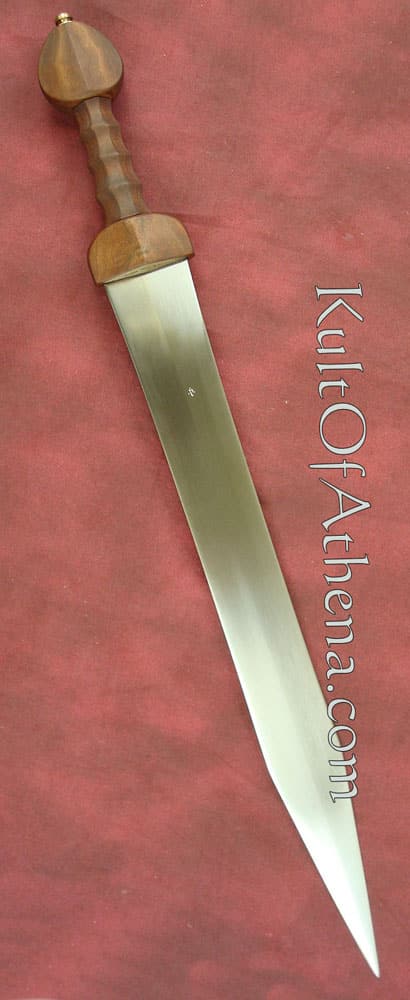
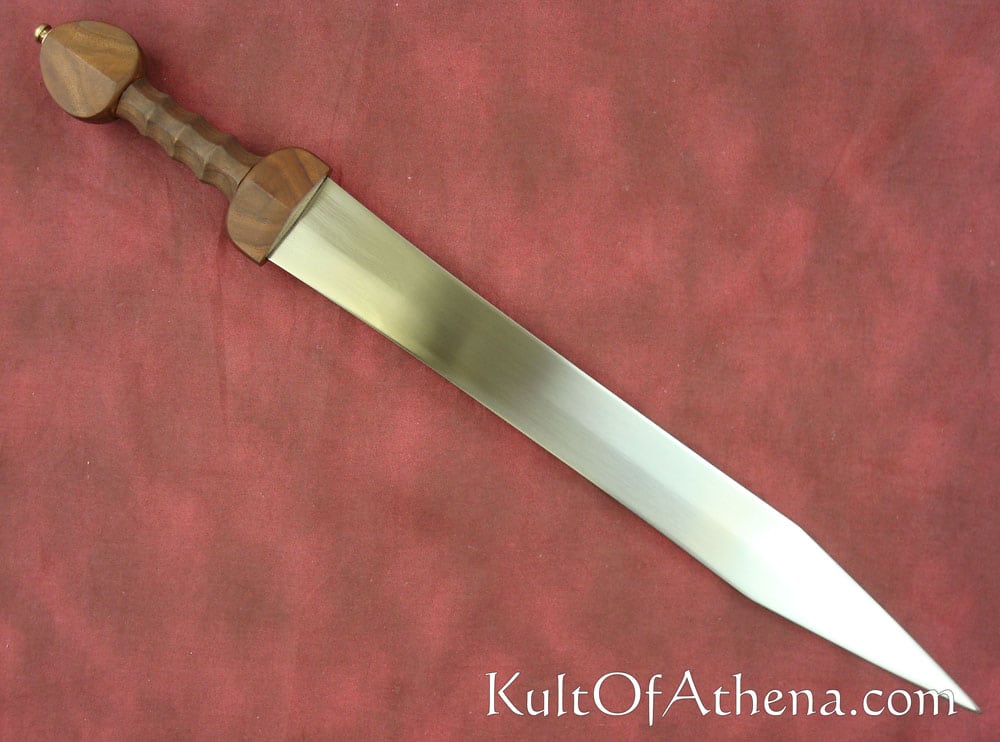
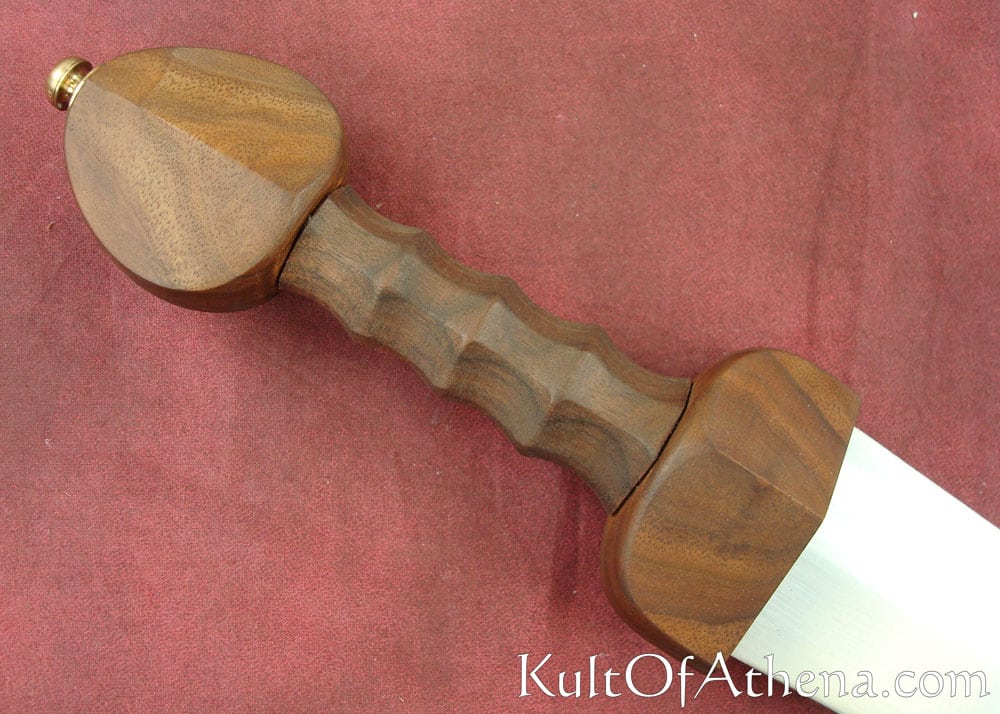
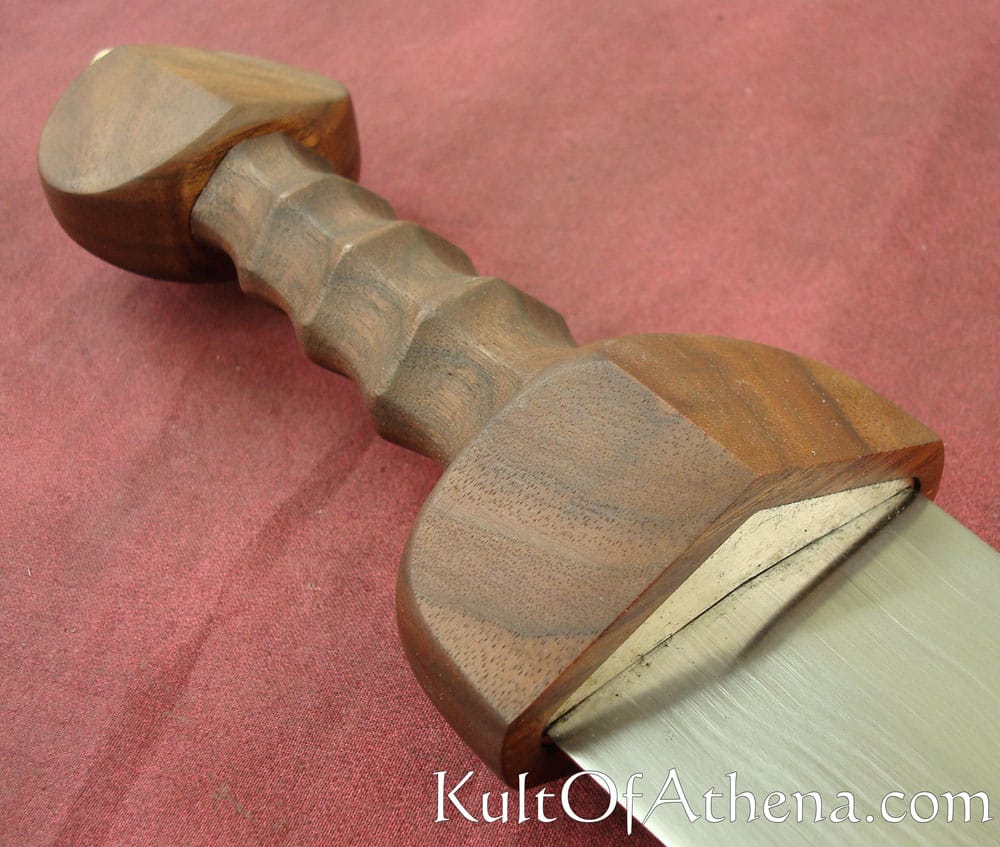
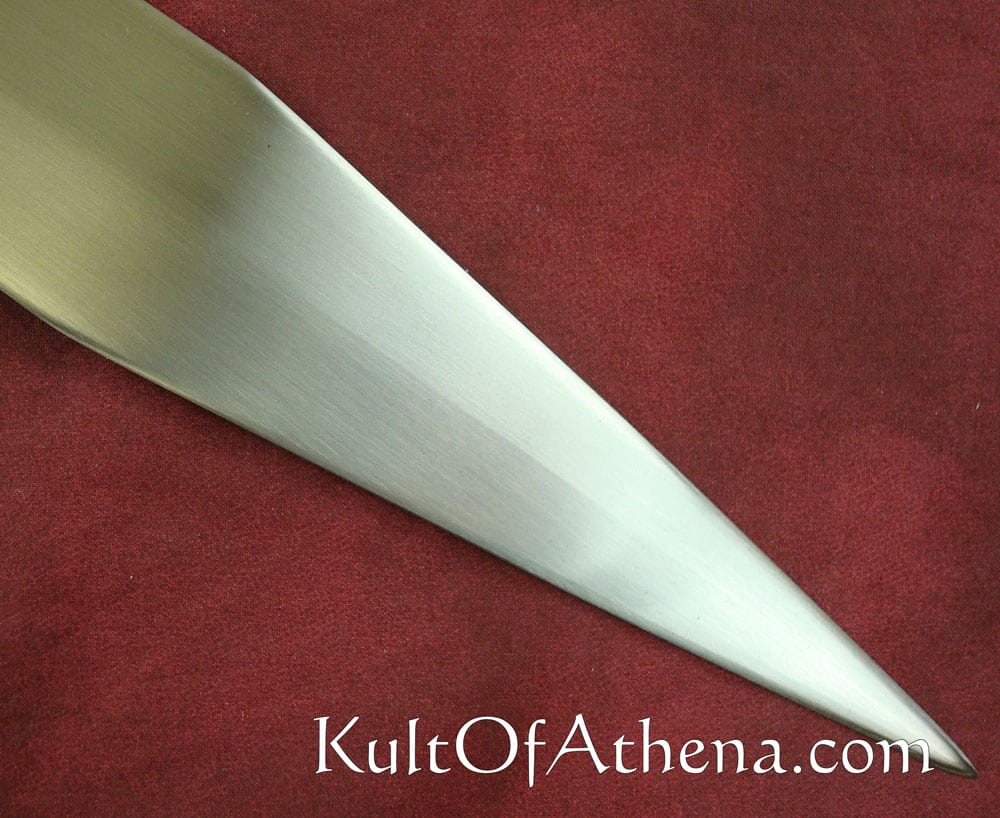
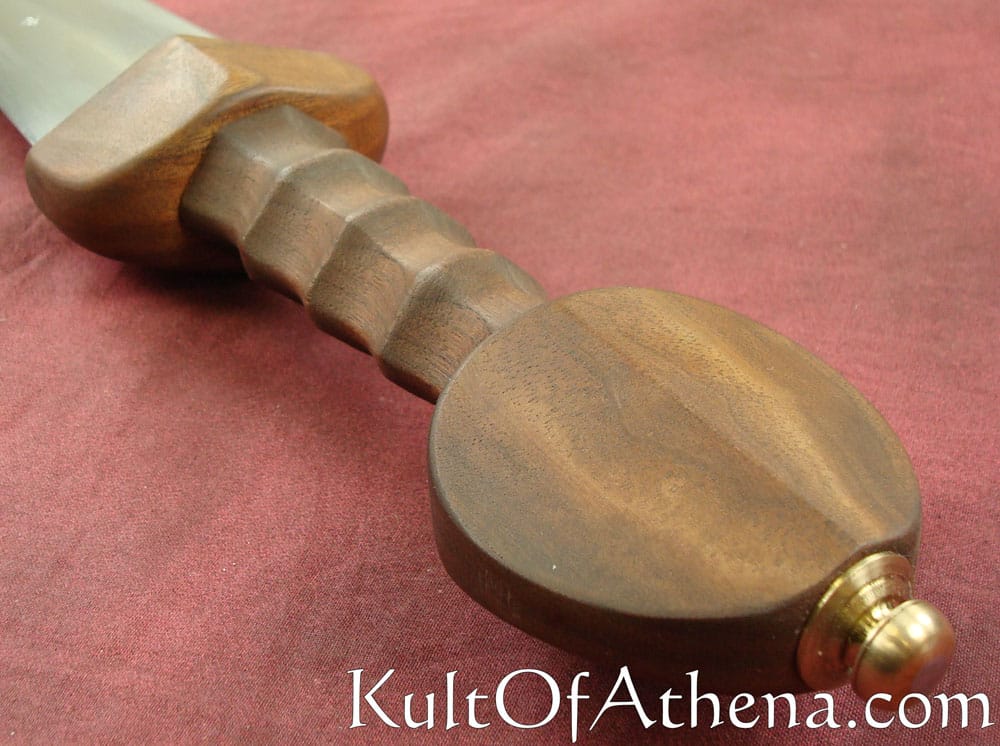

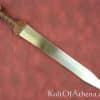
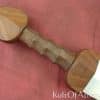
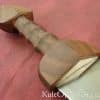
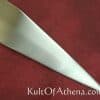

Reviews
There are no reviews yet.